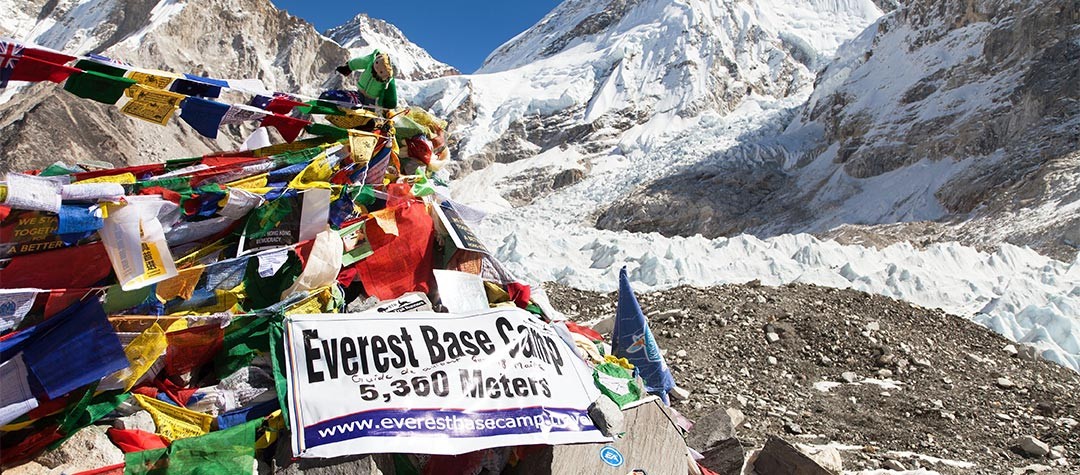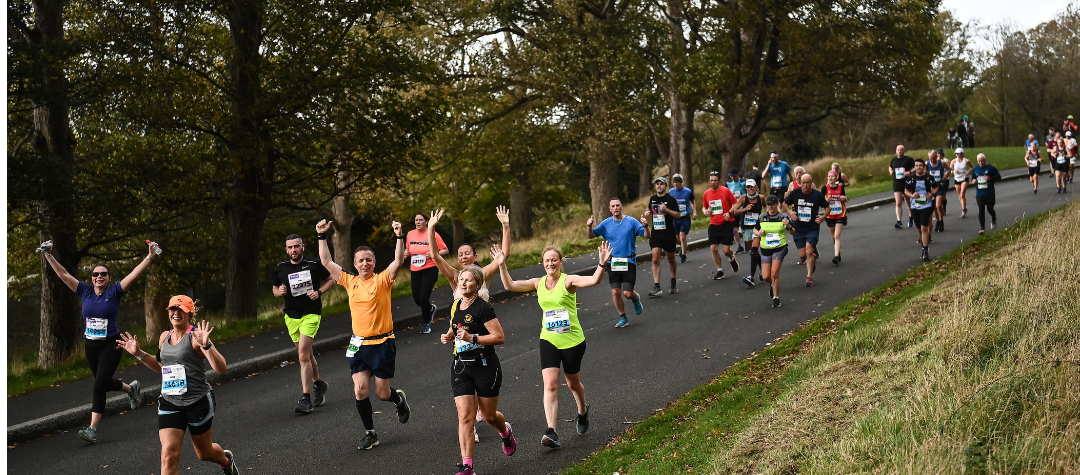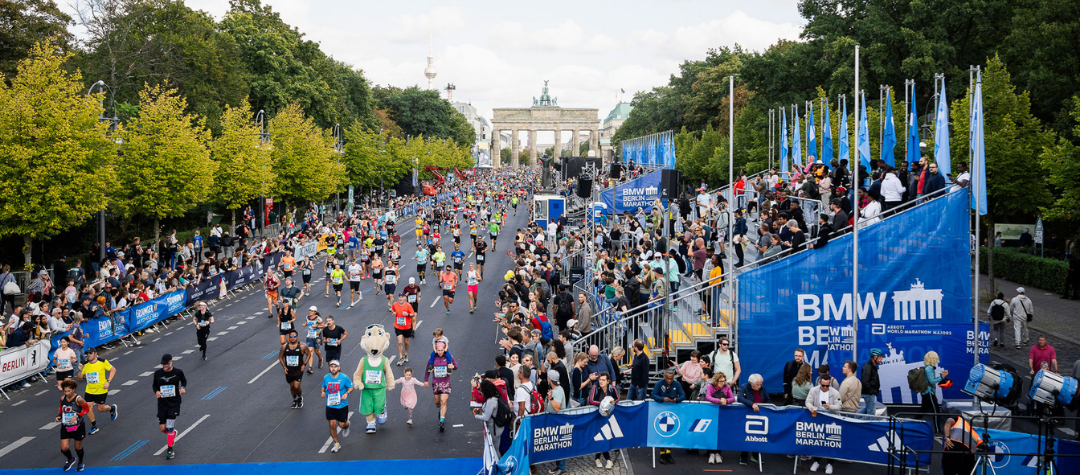A trek to Everest Base Camp is a must for adventure travel enthusiasts. Take a look at our typical Everest base camp trek itinerary to get an idea of the challenge that could await you.
The Everest trek ventures deep into the Himalayas with amazing views of many of the world's highest and most beautiful mountains. Not only can you enjoy the breathtaking views across the Khumbu icefall, but you can experience all the amazing landscapes and culture that Nepal has to offer too.
A trip to Everest Base Camp is a real adventure taking you from the bustling Nepalese capital of Kathmandu, via a small aircraft, to Lukla and the start of the trek up the Khumbu Valley. The trek passes through many Sherpa villages, including the famous trading center of Namche Bazar, as well as visiting Buddhist monasteries along the way.
Trekking to Everest Base Camp
Treks to Everest Base Camp vary in duration but to ensure you acclimatize properly to the high altitude and enjoy your adventure to the full, it is recommended that the trek lasts 17 to 20 days.
In order to trek to Everest Base Camp you must go as part of an organised trek with a licensed mountain tour operator. Local guides will give you invaluable knowledge and are renowned for their friendly and welcoming domina. Porters will carry the majority of your food and equipment and cook all of your meals for you. For the trek you only need to carry a daysack containing food, water and warm clothing.
Day-to-day Everest trek itinerary
There are far too many amazing sights and experiences to describe on a trek to Everest base Camp but below is a basic example day-to-day itinerary. Please note this itinerary is a guide only and may vary depending on the mountain tour operator you travel with.
Day 1 – Flight to Kathmandu
Day 2 – Rest day Kathmandu
Take some time to explore the hustle and bustle of Kathmandu before taking some well needed rest before your adventure begins tomorrow.
Day 3 – Fly Kathmandu to Lukla
On day three your adventure really begins, an early flight by small aircraft takes you to Lukla, the gateway to the Khumbu mountain range. Enjoy the exciting flight with a glimpse of Everest in the distance. After landing in Lukla you will meet your trek guides and porters and set off for your first night's stop at Phakding. Phakding is a small trading village sat on the banks of the Dudh Kosi River and there are a number of lodges where you will spend the night.
Day 4 – Trek to Namche Bazaar
Food on the trek is mostly vegetarian and so after a breakfast of cereal, bread, eggs and tea or coffee, it's time to set off and follow the banks of the Dudh Kosi River. You will cross the Dudh Kosi twice by small suspension bridges before reaching the village of Monjo and entering into the Khumbu National Park.
After crossing another suspension bridge the trek then climbs steeply for about two hours up 'Namche Hill' to reach Namche Bazaar at 3,400m. Namche Bazaar is a famous and prosperous trading town and is also the capital of the Khumbu region. The market is a fascinating spectacle with many traders crossing the border from nearby Tibet to trade their wares.
Day 5 – At leisure in Namche Bazaar
Day five is spent resting in Namche at 11,155 feet (3,400 meters) to allow your body to become acclimatized to the high altitude and thinner oxygen. A great option is to walk to and have lunch at the Everest View Hotel at 12,795 ft (3,900m) and then return to Namche.
Day 6 – Trek to Deboche
After your rest day it’s onwards and upwards to base camp. From Namche, the trail meanders around the side of the valley high above the Dudh Kosi River. This is an amazing day as the peaks of the world's largest mountain loom into view as you start to trek ever closer. Lhotse, Nuptse and Ama Dablam are all now visible and it’s hard not to become mesmerised by these magnificent mountain peaks.
The trail passes a few villages with tea shops until crossing the Dudh Kosi River for a steep climb to Thyangboche and the majestic Buddhist monastery before dropping back down to stay overnight in a riverside lodge.
Day 7 – Trek to Dingboche
After breakfast the day's walking starts with an exciting river crossing via the high suspension bridge outside Deboche. A further one hour trekking leads to Pangboche, home of the famous Sherpas and also awesome views of Ama Dablam. A few hours later and you arrive at the charming farming village of Dingboche at 14,468 feet (4,410 meters), where you sleep in the lodges.
Day 8 – Acclimatisation day at Dingboche
Acclimatisation is vital in a high altitude mountain environment and a day is spent at Dingboche prior to ascending the upper section of the Khumbu Valley.
Day 9 – Trek to Dugla
Feeling fitter after a day of rest and acclimatisation, it’s time for the three-hour trek to reach the small collection of lodges in Dugla at 15,157 feet (4,620 meters). Along the way there are some outstanding views of Ama Dablam, Cholatse and Taweche.
Day 10 – Trek to Lobuje
After breakfast you follow the trail from Dugla as it climbs steeply up beside the glacier moraine. After a few hours the trail leads to the small cluster of tea houses situated at Lobuje at 16,207 feet (4,940 meters). Here the afternoon is spent relaxing and continuing the process of slow acclimatisation.
Day 11 – Trek to Gorak Shep
Today, is relatively easy as it’s just another short three-hour trek to reach Gorak Shep at 17,125 feet (5,220 meters). Gorak Shep is the site of base camp for Everest expeditions during the 1950s and will now be your home for the next few days for treks and acclimatisation around the area before finally trekking to Everest Base Camp.
Day 12 – Climb Kala Pattar
Day 12 is spent making an ascent of Kala Pattar at 18,192 feet (5,545 meters) in preparation for the trek to base camp the next day. The two to three-hour climb is hard work but rewarded by sunset views of Everest as well as the Khumbu Icefall, Lhotse, Nuptse, and Pumori. It’s then back to the tents at Gorak Shep where everyone is excited about tomorrow’s trek to Everest Base Camp.
Day 13 – Trek to Everest Base Camp
Leaving Gorak Shep the trail leads onto the rock and ice of the Khumbu Glacier for the three-hour trek to Everest Base Camp at the foot of the Khumbu Icefall. You might even be lucky enough to meet teams making an ascent of the mountain. Some expedition teams have spent up to two months at base camp waiting for the right weather conditions to climb the mountain but luckily you will return to Gorak Shep after a lunch prepared by your Sherpa porter team.
Day 14 – Trek to Pheriche
From Gorak Shep it’s time to start your descent back off the mountain. The route returns to Lobuje and then a quick lunch break, likely consisting of salad, potatoes and fruit in Dugla before arriving at Pheriche to sleep overnight in the lodges.
Day 15 – Trek to Kyangjuma
The descent continues down the scenic valley passing through Pangboche and re-passing the monastery at Thyangboche before a steep descent of 1,500 feet (500 meters) to the Dudh Kosi and then to Kyangjuma to spend the night.
Day 16 – Trek to Monjo
Each morning you feel fitter and stronger after descending to lower altitudes and thicker oxygen. Leaving Kyangjuma the trail crosses a suspension bridge before climbing the opposite side of the valley to reach Namche Bazaar. A steep 1,969 foot (600 meter) descent from Namche leads to another suspension bridge to re-cross the Dudh Kosi River to reach the small village of Monjo.
Day 17 – Trek to Lukla
From Monjo the trail flattens out, crossing the Dudh Kosi River twice more before climbing a gentle hill to reach Lukla. You have time to stop and relax at the numerous tea houses that now appear on the trail.
Day 18 – Fly Lukla to Kathmandu
From Lukla you’ll catch an early morning flight to Kathmandu where you can celebrate your recent trek and also explore the city. Check out the temples and Thamel market shopping area and why not treat yourself to dinner at the Summit Hotel.
Day 19 – Leisure day in Kathmandu
Spend a rest day exploring this amazing city and take time to visit the temples of Pashupatinath, Swayambhunath and Durbar Square, as well as the bustling districts of Bhaktapur and Patan.
Day 20 – Flight home from Kathmandu
How to get to Kathmandu
An adventurous and budget way to trek to Everest Base Camp is to simply book a flight to Kathmandu and then find a mountain guide and team of porters to take you. However, finding a guide and porters can take time and you can never be sure if you are getting well-trained and qualified staff.
High altitude mountain environments should be treated with respect and it is strongly recommended that you book your expedition through a reputable mountain tour operator.
Using a reputable mountain tour operator has many benefits:
- Well-planned itineraries with good acclimatisation designed to give you the best opportunity to reach base camp.
- Sleeping overnight in lodges looked after by a Nepalese Sirdar, plus Sherpas and porters.
- Well-trained and well-equipped porters.
- An office with staff who can answer any questions you any have due to their first hand knowledge of the region and its mountains.
- Meet other trek members on a training weekends. These are great to meet other trek members but also to ask any questions about kit, visa and vaccinations.
- Mountain tour operators often hire equipment meaning you can ensure you are well-equipped for the trip without having to purchase expensive equipment that you might never use again.
Please note: when booking a trek through a mountain tour operator make sure you know what is and what is NOT included in the price, for example: visa fees, airport taxes, and travel insurance as this can vary between providers.
Your Everest Base Camp trek should include the following:
- Return flights
- Internal flights in Nepal, hotel and airport transfers
- Hotel accommodation in Kathmandu
- Road transport in Nepal
- Accommodation in lodges and tea houses plus all meals during the trek
- Porterage costs
- Costs for your mountain tour operator and accredited leader and Sherpa staff
Who can trek to Everest Base Camp?
The Everest Base Camp trek is an adventure suitable to individuals who are able to walk for four to five hours in a day, with a light rucksack. Some of the days are quite long, and the walking can feel more strenuous at altitude. Therefore, anyone with average physical fitness can trek to Everest Base Camp. The secret to success is to acclimatize properly during your ascent.
Regardless of your level of fitness, it is always good advice to have a full medical check-up before deciding whether or not to tackle the trek to Everest Base Camp. Also, when you are planning your trip ensure you have had at least one rest day after flying to Kathmandu to recover from any jet lag or travel fatigue.
Medical information
Always consult your doctor for a list of all the medical requirements for a trip to Nepal and a trek to Everest Base Camp. It’s a good idea to always allow plenty of time prior to your trip to take any medication as you may have an adverse reaction to some medication and might need to try some alternatives (this is quite common with altitude sickness tablets).
Trek to Everest Base Camp for Charity
If taking on a trip to Mount Everest Base Camp is something you would like to complete, look into tackling the challenge for charity. This is a popular charity trek and gives you a great opportunity to take in some of the world’s most spectacular scenery while raising funds for a worthy cause.
Feeling inspired? Why not view our list of Partner Charities and pick a great cause to support.















